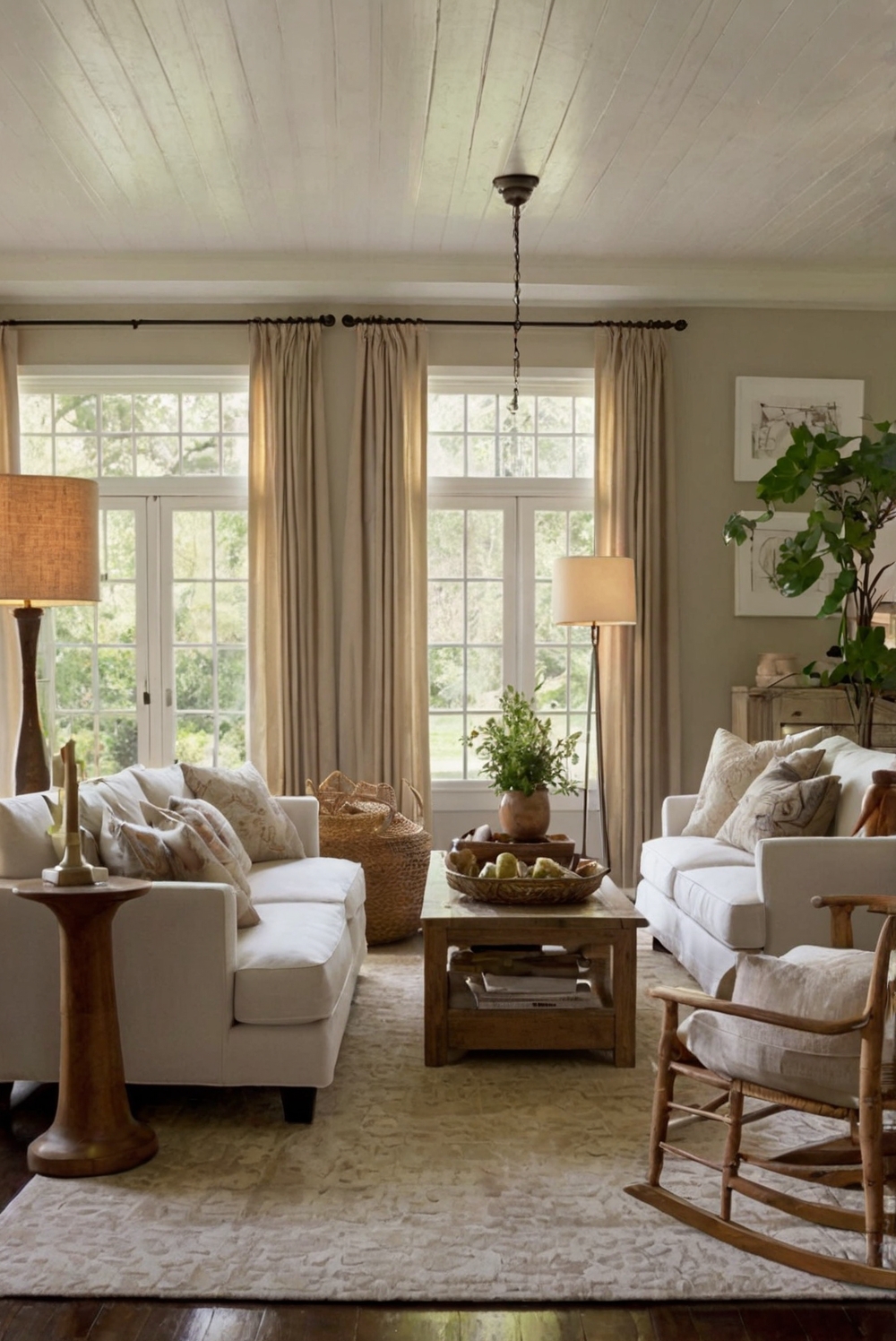Discover the key principles of Feng Shui for optimizing your living room furniture arrangement. Dive into the daily interior designer routine and elevate your space with balance and harmony.
**What are the key principles of Feng Shui to consider when arranging living room furniture?**
In Feng Shui, the living room is a vital space for harmony and energy flow. When arranging furniture, consider the following key principles:
1. **Balance**: Ensure there is a balance of elements and furniture placement to create a harmonious environment.
2. **Clutter-Free**: Keep the living room clutter-free to allow positive energy to flow freely.
3. **Natural Light**: Maximize natural light by positioning furniture to allow light to enter freely.
4. **Flow**: Arrange furniture in a way that promotes smooth movement and energy circulation in the room.
5. **Colors**: Choose colors that promote relaxation and positivity in the living room space.
6. **Plants**: Add indoor plants for a touch of nature and improved air quality.
By following these principles, you can create a welcoming and energizing living room space that promotes well-being and positivity in your daily life.
Additionally, incorporating personalized home decor ideas and interior design elements that reflect your style can further enhance the overall ambiance of your living room.
Key Principles of Feng Shui for Living Room Furniture Arrangement
When arranging your living room furniture according to Feng Shui principles, there are several key factors to consider to create a harmonious and balanced space.
Flow of Energy
One of the most important principles of Feng Shui is the flow of energy, known as chi. To ensure a smooth flow of chi in your living room, avoid blocking pathways with furniture. Arrange your furniture in a way that allows energy to move freely throughout the room, creating a sense of balance and harmony.
Balance and Harmony
Creating a sense of balance and harmony in your living room is essential for good Feng Shui. Make sure to distribute the weight of your furniture evenly throughout the space to prevent any one area from feeling too heavy or cluttered. Use a mix of shapes, sizes, and textures to create visual interest and balance in the room.
Functionality and Comfort
When arranging your living room furniture, consider the functionality and comfort of the space. Position your furniture in a way that promotes conversation and interaction among family members and guests. Ensure that there is enough seating for everyone and that the furniture is arranged in a way that allows for easy movement and flow throughout the room.
Optimizing Natural Light
Incorporating natural light into your living room design is crucial for good Feng Shui. Natural light enhances the flow of positive energy in the space and creates a sense of openness and vitality. Position your furniture in a way that maximizes natural light exposure, such as placing seating near windows or using mirrors to reflect light throughout the room.
Color and Material Selection
When choosing furniture for your living room, consider the colors and materials carefully. In Feng Shui, certain colors and materials are believed to have specific energetic qualities. Opt for colors that promote relaxation and harmony, such as soft blues, greens, and earth tones. Choose natural materials like wood, bamboo, and stone to create a grounding and nurturing environment.
In conclusion, when arranging your living room furniture according to Feng Shui principles, it is essential to focus on creating a harmonious and balanced space that promotes the flow of positive energy. By considering factors such as flow of energy, balance and harmony, functionality and comfort, natural light optimization, and color and material selection, you can create a living room that not only looks beautiful but also feels inviting and harmonious.
1. How does furniture placement affect the flow of energy in a living room according to Feng Shui principles?
Furniture placement plays a crucial role in creating a harmonious flow of energy, or “Chi,” in a living room. In Feng Shui, it is important to ensure that furniture is arranged in a way that allows energy to flow freely throughout the space. This means avoiding blocking pathways and ensuring that there is a balance of energy in the room. For example, placing furniture in a way that creates a clear path for energy to move around the room can help promote a sense of tranquility and balance.
2. What are the key Feng Shui principles to consider when arranging furniture in a living room?
When arranging furniture in a living room according to Feng Shui principles, there are several key principles to consider. These include ensuring that furniture is positioned in a way that promotes a sense of balance and harmony in the space. This can involve creating a clear pathway for energy to flow, avoiding clutter, and incorporating elements that represent the five elements of Feng Shui – wood, fire, earth, metal, and water. Additionally, furniture should be placed in a way that promotes comfort and relaxation, such as ensuring that seating is arranged in a way that encourages conversation and connection.
3. How can the placement of mirrors enhance the Feng Shui of a living room?
Mirrors can be a powerful tool for enhancing the Feng Shui of a living room. When placed strategically, mirrors can help amplify the flow of energy in the space and create a sense of expansiveness. In Feng Shui, mirrors are often used to reflect light and energy, which can help brighten a room and create a more inviting atmosphere. Additionally, mirrors can be used to create a sense of balance and harmony in a space by reflecting positive energy and deflecting negative energy. By placing mirrors in key locations, such as opposite windows or doorways, you can enhance the Feng Shui of your living room and create a more harmonious environment.
4. What role do colors play in Feng Shui when arranging living room furniture?
Colors play a significant role in Feng Shui and can have a powerful impact on the energy of a space. When arranging living room furniture, it is important to consider the colors of the furniture and how they interact with the overall color scheme of the room. In Feng Shui, different colors are associated with the five elements – wood, fire, earth, metal, and water – and can be used to create a sense of balance and harmony in a space. For example, incorporating earth tones like beige or brown can help create a grounding energy, while adding pops of red or orange can bring in a vibrant, fiery energy. By carefully selecting colors for your living room furniture, you can enhance the Feng Shui of the space and create a more balanced and harmonious environment.
5. How can the layout of furniture in a living room affect the overall energy flow according to Feng Shui principles?
The layout of furniture in a living room can have a significant impact on the overall energy flow, or Chi, of the space according to Feng Shui principles. It is important to consider the placement of furniture in relation to doorways, windows, and other key elements in the room to ensure that energy can flow freely throughout the space. For example, placing a sofa against a wall or in a corner can create a sense of stability and security, while positioning chairs in a way that encourages conversation can promote a sense of connection and harmony. By carefully arranging furniture in a way that allows for a balanced and harmonious flow of energy, you can create a more peaceful and welcoming living room environment.




